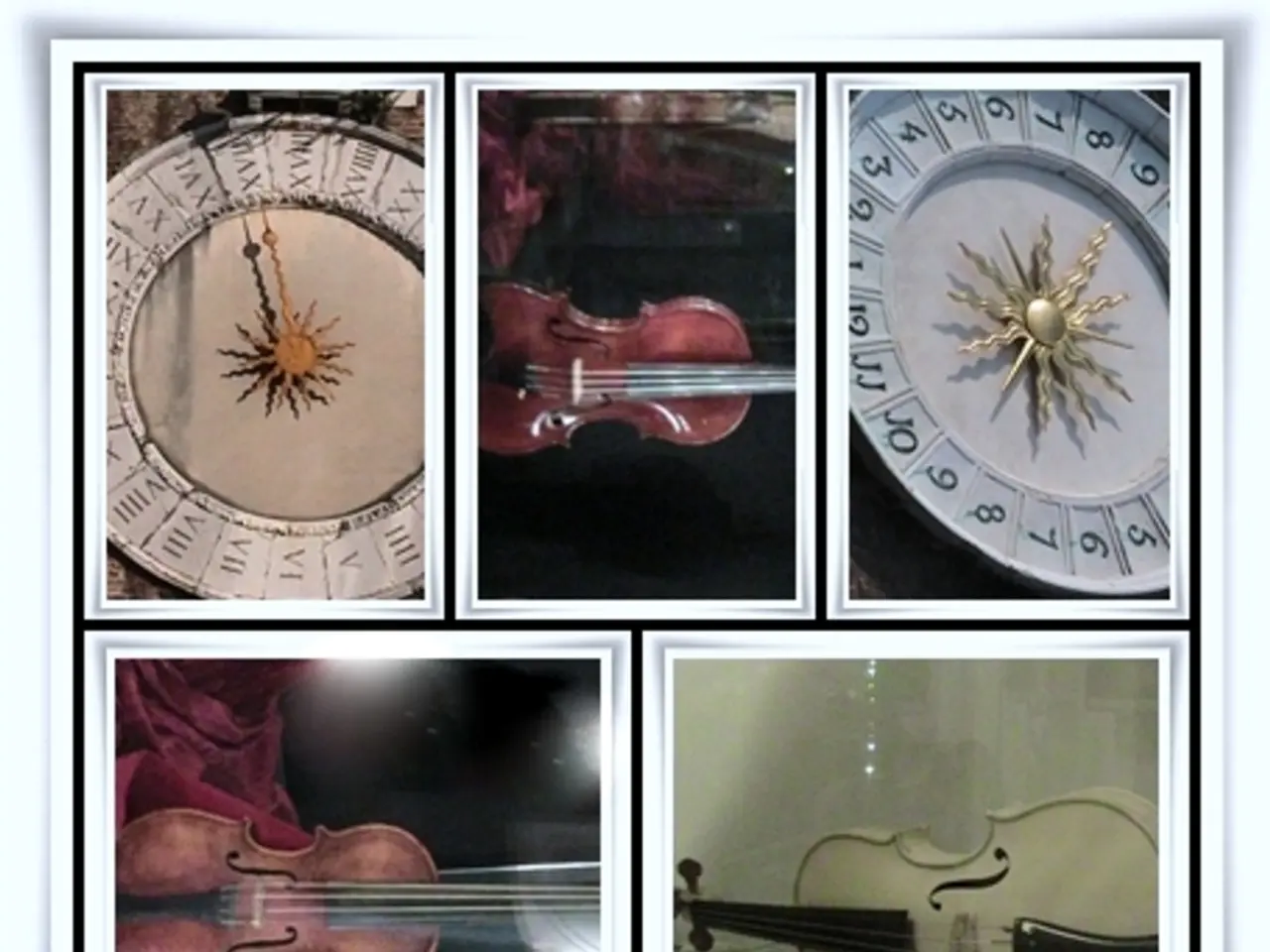The Essence of Rhythm: Exploring Time, Beat, and Meter's Role in Music Composition
==========================================================
Rhythm is a fundamental aspect of music, and mastering it is crucial for creating harmonies and melodies. This guide aims to help you apply rhythmic and polyrhythmic concepts in the creative process.
In the realm of music theory, the key concepts in understanding rhythm are beat, meter, note values, time signatures, tempo, and the relationship between rhythm and pulse.
Beat is the basic unit of time in music, a steady pulse you can tap your foot to, forming the heartbeat of a piece.
Meter groups these beats into patterns called measures or bars, often indicated by a time signature (like 4/4 or 3/4), which tells you how many beats are in each measure and which note value gets one beat.
Note values define the duration of individual notes within the rhythm (e.g., whole notes, half notes, quarter notes), shaping the flow of sound and silence.
Tempo refers to the speed of the beat, affecting how fast or slow the rhythmic patterns are performed.
The pulse is the underlying steady beat, while rhythm is made up by layering different note lengths and patterns on top of this pulse.
Mastery of these basics helps musicians internalize the rhythm and coordinate with others, essential for overall musical structure and expression.
Different types of meters can evoke different moods and feelings for a song. For instance, 4/4 time is simple duple time, with eight notes counted ONE-and, two-and, THREE-and, four-and. On the other hand, 3/4 time is simple triple time, with a strong-weak-weak pattern.
Tempo is the speed and pace of how music is performed, measured in beats per minute (BPM). Faster tempos are more exciting and high-energy, while slower tempos are common in ballads.
Simple time groups eighth notes into groups of two (like 2/4), while compound time groups them into groups of three (like 3/4 or 6/8 and 9/8).
Accents in music are the emphasis placed on a particular note or beat, used to create dynamics, interest, tension, or release within a piece of music.
A musical note represents the duration of time that an instrument will be played. For example, a whole note can be broken down into halves, quarters, eighths, and sixteenths.
Within a bar, there are strong beats that drive the pulse and weak beats that counteract the pulse.
Odd time signatures take the rules behind simple and compound time and combine them, following a pattern based on some combination of duples and triples. For example, 5/4 time is an odd time signature with five quarter notes, divided into a duple (2 quarter notes) and a triple (3 quarter notes).
Syncopation in rhythm is when notes are played off the main strong beat pulse of the time signature, often emphasizing the backbeat or off beats.
Time signatures dictate how the pulse is measured in each bar, and tempo defines how fast the pulse is.
This guide focuses on the western way of understanding rhythm, with seven basic concepts: beats and notes, measures and time signatures, strong and weak beats, meter, syncopation, accents, and tempo.
By understanding these concepts, you'll be well on your way to creating your own rhythmic masterpieces. Happy composing!
Music production requires mastering rhythmic and polyrhythmic concepts, such as beat, meter, note values, tempo, and syncopation, to create harmonies and melodies. In the entertainment industry, understanding music distribution involves focusing on the speed and pace of music (tempo), the variations in time signatures, and the use of accents for dynamics and interest.








